If you plan on using just one paint color throughout the whole house, you might be wondering which color would be the best choice.
Whether you’re simply in need of a nice, neutral base color for the main living areas or you have a rental property that needs a fresh coat of paint throughout, you can save a lot of time by painting the whole house one color.
Whatever the reason that brought you here, I can help! Today, I’m sharing some tips for choosing a paint color that would work well throughout an entire house, along with the best whole-house colors from some of the most popular paint retailers.
But first, let’s answer a commonly asked question: Is it OK to paint the whole house one color?
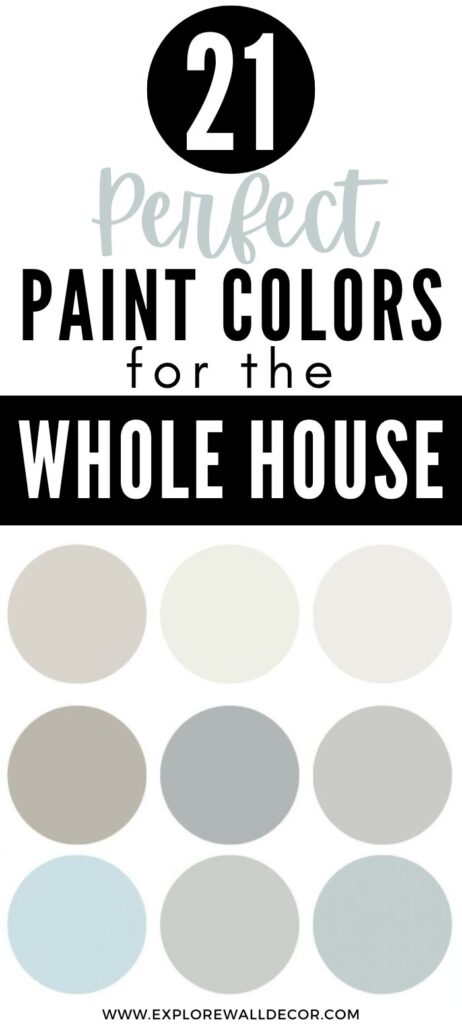
This post may contain affiliate links and we may earn commissions when you click on the links at no additional cost to you. See our disclosure policy for more details.
Is it OK to Paint the Whole House One Color?
Because a paint color can look vastly different from one room to another, as a general rule, you will want to choose your wall colors on a room-by-room basis.
However, as I already mentioned, you might have a very specific reason for seeking out one nice, neutral color for the whole house.
You might be a landlord looking for a color that would appeal to a variety of potential renters. Or, perhaps you want to start out with a neutral base color and select more colorful hues for specific spaces in the house.
So, yes, you can definitely paint the whole house one color — and I’ll be sharing some awesome whole-house paint color recommendations shortly. But it would certainly be beneficial to grab a few different samples to try out before committing to one of them!
How to Choose One Paint Color for the Whole House
Let’s go over a few things you should know before painting the whole house one color. And honestly? Even if you decide to choose multiple paint colors for your interior, you will still want to take these tips into consideration.
Paint the Walls Last
Before choosing a paint color, make sure to select all of the materials that aren’t as easy to replace, such as flooring, trim, and appliances. They should heavily influence the wall color you choose (rather than choosing a paint color first and then trying to select your other materials around it).
Consider the following questions:
- Are the existing materials cool or warm?
- What color undertones do they have?
- What mood do you want to evoke?
Then you’ll want to grab a sample of each color you’re considering….
Grab Some Samples
You can either buy a small can of paint and a brush or roller (make sure to apply two coats!) or you can get a large stick-on sample from many paint brands — including Sherwin-Williams and Benjamin Moore.
The cool thing about these samples? They’re made with two coats of the ACTUAL paint, so you can see EXACTLY how it’s going to look in your space. Plus, they arrive on your doorstep in 1-3 days, so you can’t beat that.
Use code FIRSTFIVE for a discount on your first Samplize order!
For your convenience, I have included links directly to the samples of all Sherwin Williams and Benjamin Moore color recommendations in this post. (But here is a link to Samplize in case you can’t wait to check them out.)
Move Them Around
Take all of your samples and look at them vertically in each room several times throughout the day. This is often a huge eye-opener. You’ll see how different each color looks in different types of lighting.
Look at them next to all of your existing materials, as well, to make sure you like how they look together.
Best Paint Colors for the Whole House
What is the best paint color for the whole house? Well… There are quite a few awesome colors to choose from, but I’m going to share some of the most popular options below.
Whole house colors are typically going to lean more neutral, so that you can use them in every room, and from there you’ll customize the color scheme with furniture and accent pieces.
I’ll try to add in a few “color” options, as well. BUT, if you prefer more color on your walls, then you’ll likely want to choose your paint colors on a room-by-room basis, selecting colors that you’re personally drawn to, and this article definitely isn’t for you.
In fact, I’ve written a couple different articles on whole house color palettes (that include some more colorful options):
5 Ideas for Your Whole House Color Palette from Sherwin Williams
5 Great Options for a Whole House Color Palette from Benjamin Moore
Check them out if you’d like, otherwise take a look at these great whole house paint colors!
*Quick note on Light Reflectance Value: LRV runs on a scale of 0% to 100%, and 50% would be a mid-value paint color. The higher the LRV, the more light a color reflects back into the room.
1. BM 2121-70 Chantilly Lace

LRV: 92.2
Benjamin Moore’s Chantilly Lace is a slightly cool white with very little undertone and a high LRV, making it one of the whitest whites on the market. It’s not a sterile white, though, and can change vastly depending on the type of lighting, as well as its surroundings.
Order a sample of Chantilly Lace
2. SW 7005 Pure White

LRV: 84
Sherwin Williams’ Pure White is a soft, slightly warm white. It’s not a bright white, yet not a creamy paint color either. Depending on your lighting and its surroundings, Pure White can look crisp or it can lean a little warmer.
3. BM OC-45 Swiss Coffee

LRV: 83.93
This one can be a little tricky to use throughout the whole house, so you’ll definitely want to sample it before putting it on the walls. Benjamin Moore Swiss Coffee is a warm, creamy white with yellow (and the slightest bit of green) undertones.
Order a sample of Swiss Coffee
4. BM OC-17 White Dove
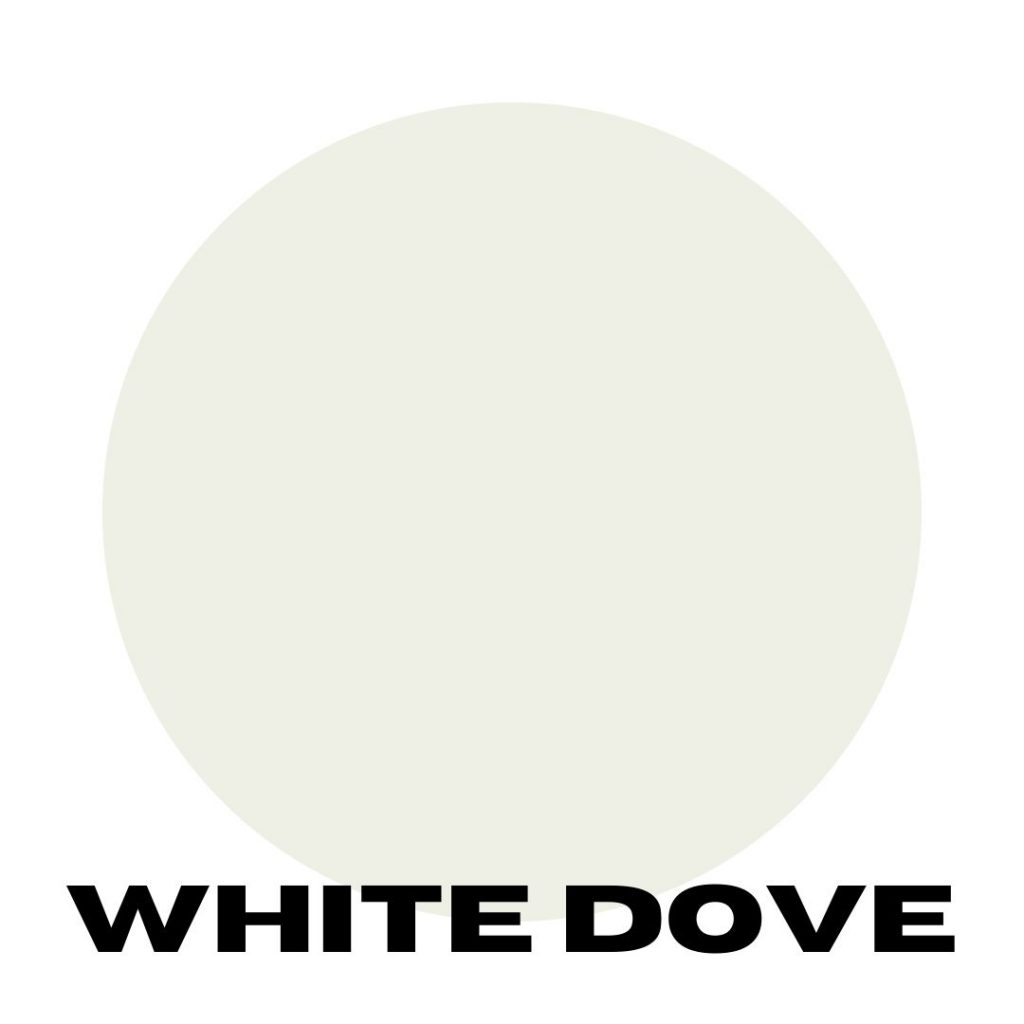
LRV: 85.38
Though not a white-white, White Dove is one of Benjamin Moore’s best selling whites. It has a creamy yellow undertone that’s been tamed down with a touch of greige, making it a nice, warm white wall color.
5. SW 7008 Alabaster

LRV: 82
Sherwin Williams Alabaster is another popular warm white that almost reaches into off-white territory. Be sure to sample it first when using it in a south facing room, since the warm light can bring out its yellow undertones.
6. BM 2137-60 Gray Owl

LRV: 65.77
Gray Owl has been one of Benjamin Moore’s bestsellers for a few years now due to its versatility. It’s a light gray paint color with the perfect balance of warm and cool (blue-green) undertones, making it a popular choice in the home decor world.
7. BM HC-170 Stonington Gray
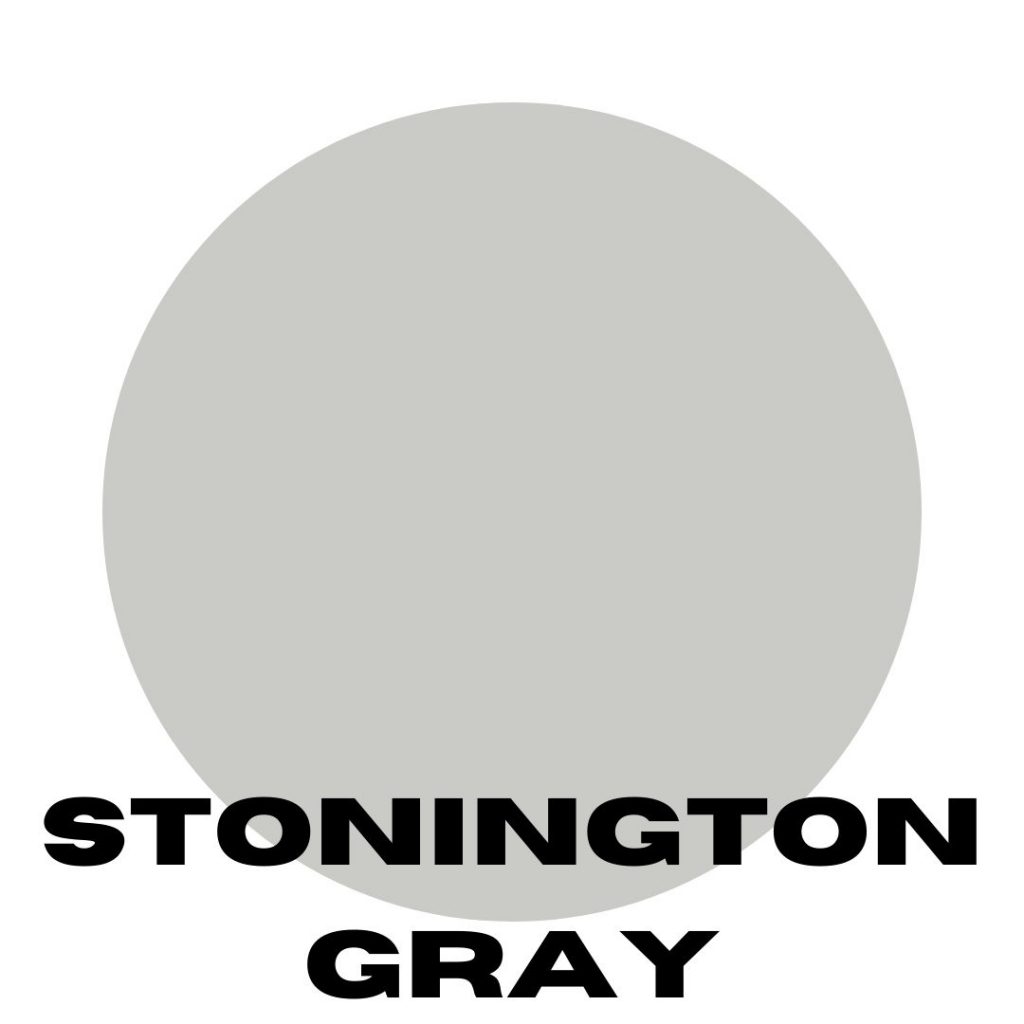
LRV: 59
BM Stonington Gray isn’t a warm gray, but it’s not terribly cool, either. It does have a bluish undertone that can lean either slightly greenish or purplish depending on the lighting.
Order a sample of Stonington Gray
8. BM 1548 Classic Gray
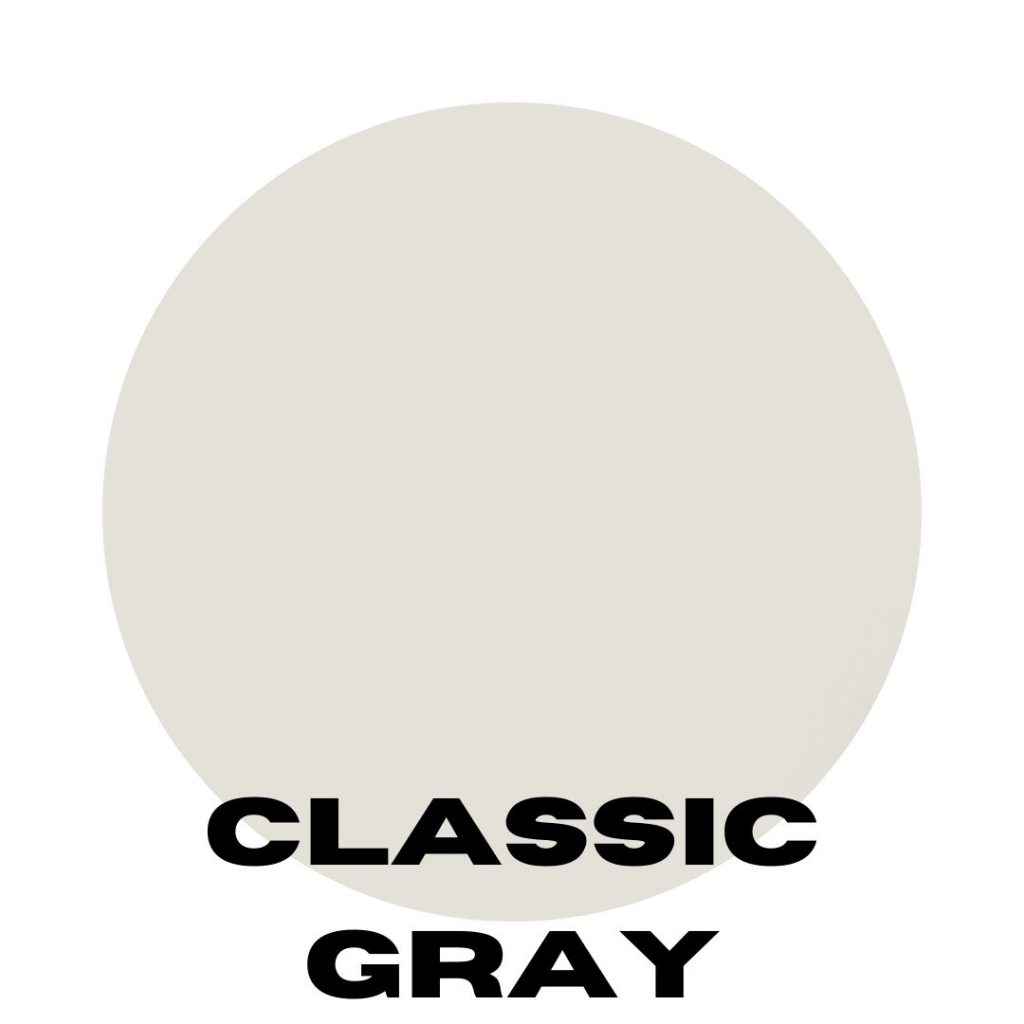
LRV: 74.78
A light, warm gray, Benjamin Moore’s Classic Gray is definitely a crowd pleaser. It doesn’t have the typical green or blue undertones, making it a great choice for your whole-house color.
Order a sample of Classic Gray
9. SW 7072 Online

LRV: 45
Online by Sherwin Williams is a nice medium tone gray — not too light and not too dark. Depending on the amount of light, Online can go lighter, or it can look really rich in dimmer lighting.
10. SW 7015 Repose Gray
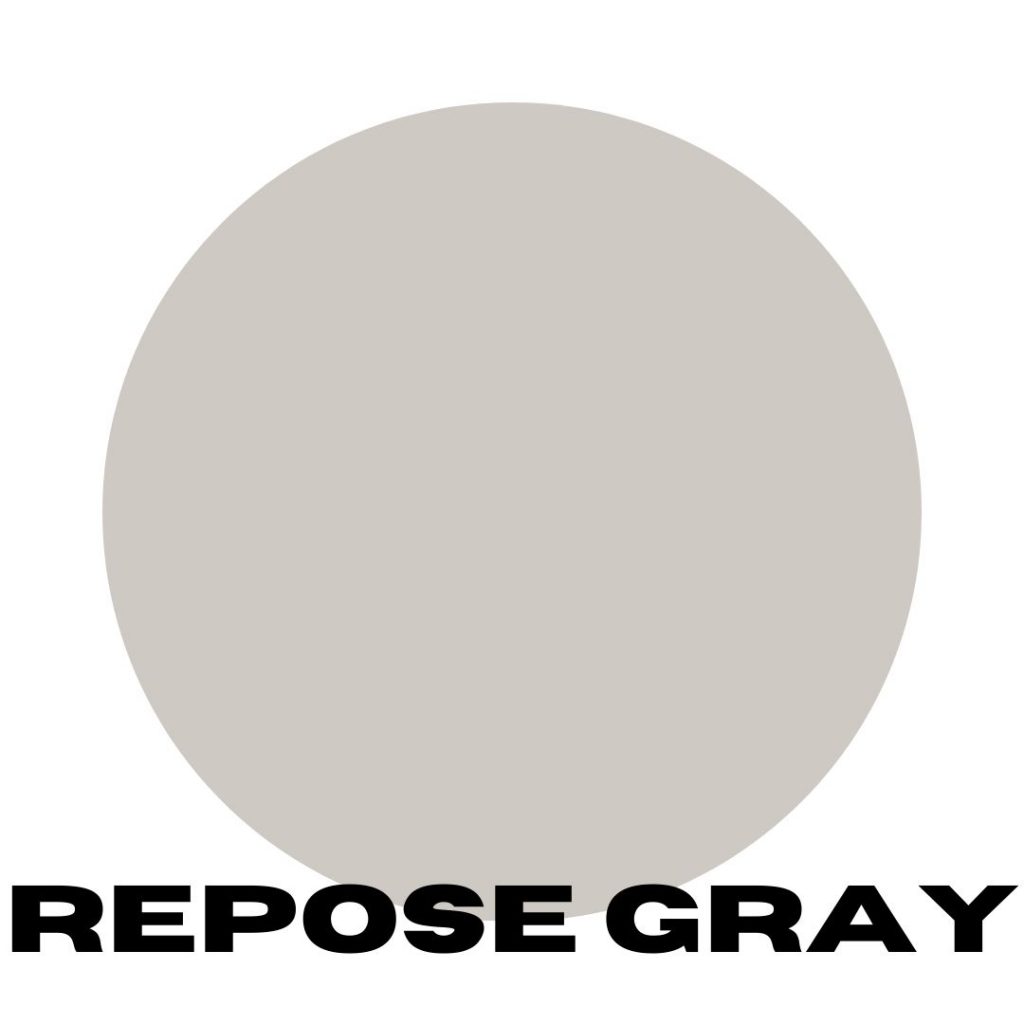
LRV: 58
While Sherwin Williams’ Repose Gray is a warm gray, it can turn cooler at times. It has greige undertones that can look purple or blue, so you’ll definitely want to sample this one before committing.
11. BM 860 Apparition

LRV: 57.67
Apparition by Benjamin Moore is a warmer medium-light gray with greenish undertones, and even a bit of yellow and orange.
12. BM 1549 Balboa Mist

LRV: 67.37
A versatile off-white, Benjamin Moore’s Balboa Mist is a warm gray that leans slightly greige (gray-beige). It’s very similar to Pale Oak (further down the list) although not quite as warm.
13. SW 7016 Mindful Gray

LRV: 48
Mindful Gray by Sherwin Williams is an almost perfect, neutral greige. With a light reflectance value of 48, it’s not a light greige, but it’s not terribly dark, either. It’s a nice, mid-tone neutral hue that’s incredibly versatile.
Order a sample of Mindful Gray
14. BM HC-173 Edgecomb Gray

LRV: 63.88
Edgecomb Gray by Benjamin Moore is a go-to warm gray that teeters more on the beige side, making it a nice greige paint color for the whole house.
Order a sample of Edgecomb Gray
15. SW 7506 Loggia

LRV: 48.58
Landing somewhere between “mushroom” and “taupe” on the color scale, Sherwin Williams’ Loggia is a nice muted, mid-tone wall color.
16. SW 6106 Kilim Beige

LRV: 57
Kilim Beige is a warm Sherwin Williams neutral that, while it has obvious pinkish-orangeish undertones, is one of my longtime favorites. It’s a chameleon in that it can change greatly depending on its surroundings, casting off very different tones depending on your lighting.
17. SW 7036 Accessible Beige

LRV: 58
With a LRV of 58, Sherwin Williams’ Accessible Beige lands somewhere on the darker end of the “light beige” scale. It’s super versatile, and would be a great choice for your one paint color for the whole house.
Order a sample of Accessible Beige
18. BM OC-20 Pale Oak
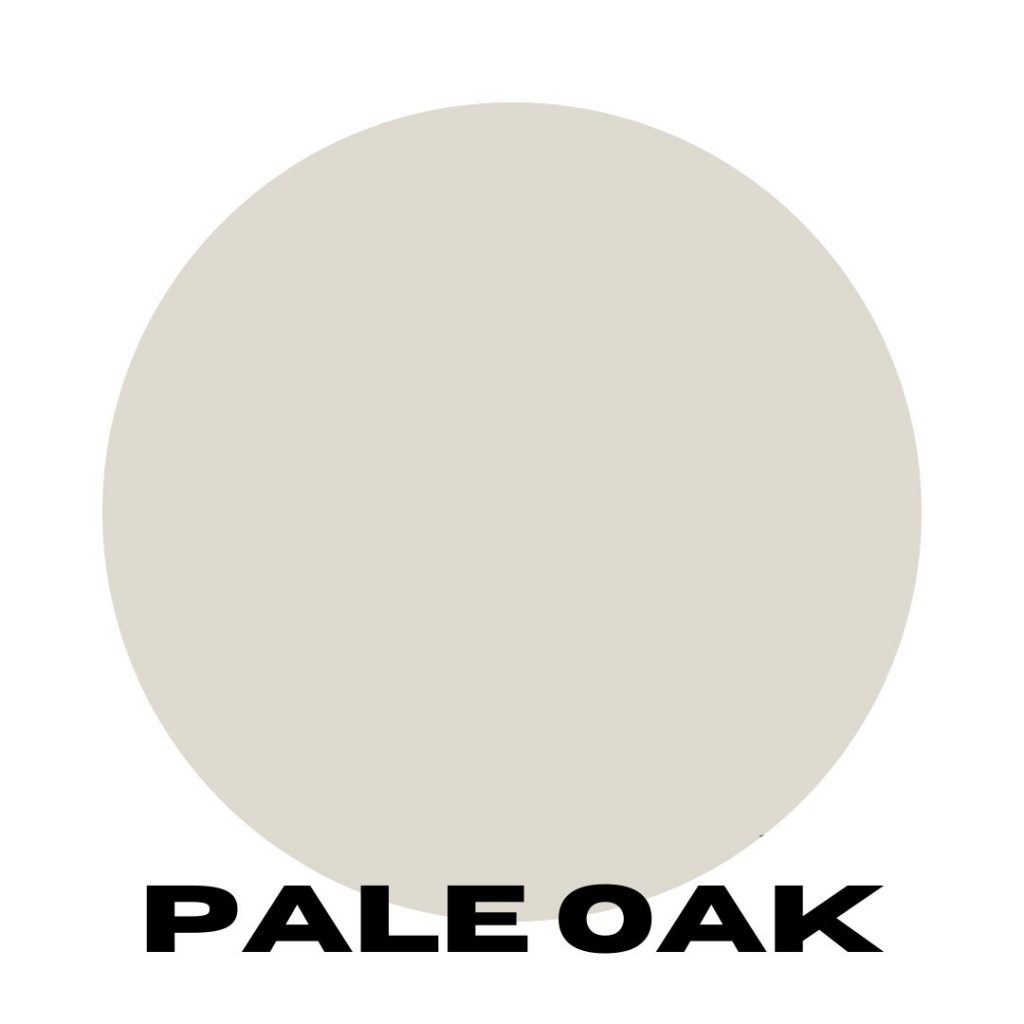
LRV: 70
Pale Oak, a beautiful light neutral (slightly warmer) greige, is in the words of Benjamin Moore: “reminiscent of the majestic white oak”.
19. BM 1563 Quiet Moments
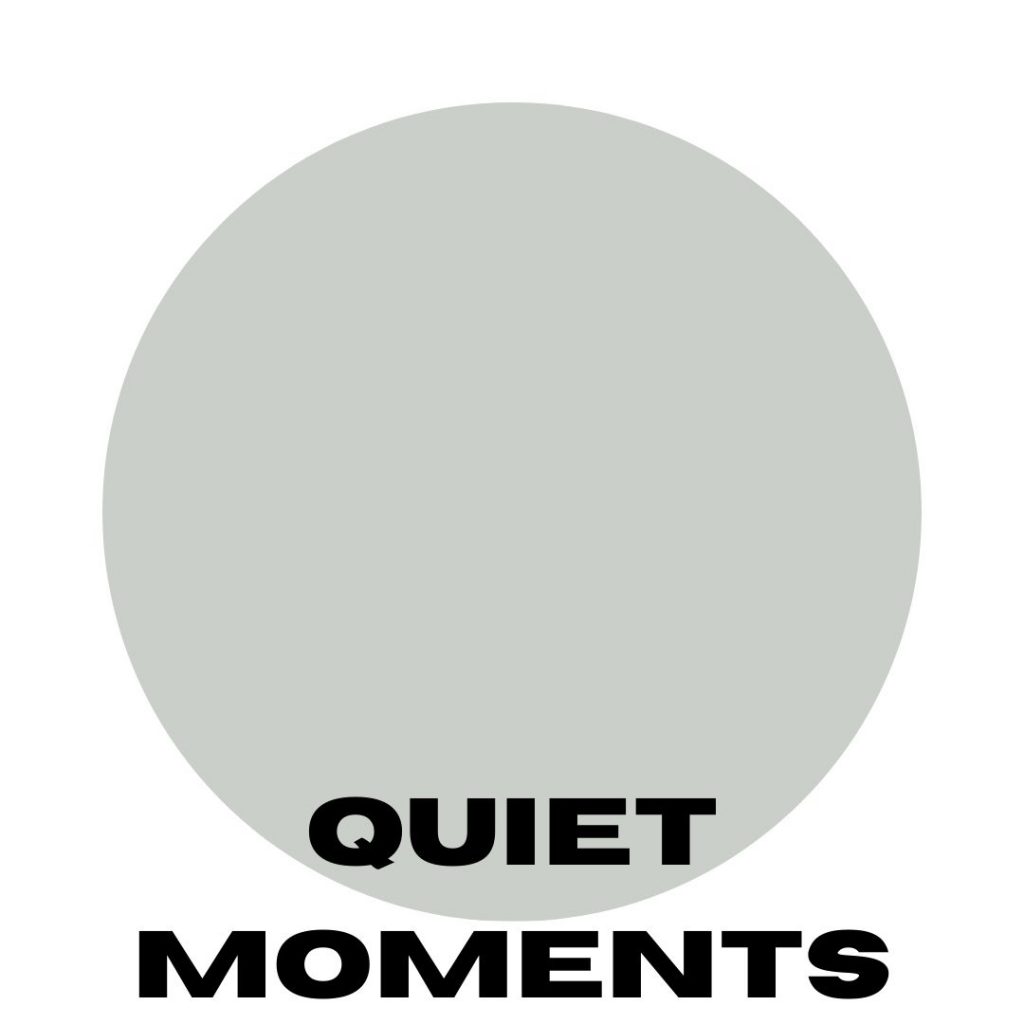
LRV: 61.87
Quiet Moments is a light blue-gray by Benjamin Moore that would look great in any room of the house. It has a little bit of color for those who want to avoid gray and beige, but is still neutral enough that it could play well with a number of colors in your home decor.
Order a sample of Quiet Moments
20. SW 6218 Tradewind

LRV: 63
Tradewind by Sherwin Williams is a beautiful, cool blue paint color that’s been muted with a little bit of gray. It’s still a fairly light color, though, so a room with lots of natural light could brighten it up (without getting too bright).
21. BM 806 Breath of Fresh Air

LRV: 70.55
This Benjamin Moore blue is certainly a breath of fresh air! With it’s LRV of 70.55, it’s a pretty bright blue that would look gorgeous in mostly any room of the house. (I would personally avoid such a light blue in the dining area, however, since it’s known to suppress the appetite — read more about color psychology here.)
Order a sample of Breath of Fresh Air
Should the Ceilings Be White or Same Color as the Walls?
If you plan on painting the whole house one color, then you’ll definitely want to paint the ceilings white. Of course, if you’re painting all of the walls white, you could probably get away with using that color on the ceilings too.
(But remember, white isn’t just white — it can have a number of different undertones, so you might still want to use a brighter white on the ceiling to give the room a little dimension.)
And if you choose anything other than white, it will simply be too much of the same color of you use it on the ceilings, too, so you’ll want to break it up with a nice, clean white.
Got angled walls or ceilings? Then you’ll want to read this article on how to decorate a slanted wall to give you a better idea on whether you should paint them white or stick with the same wall color.
How Much Paint Do You Need for the Whole House?
Follow the below steps to calculate the square footage of each room in your house, and then add them all together. From there, you can follow the steps for estimating how many gallons to buy.
1. Calculate the Square Footage
To figure out the number of square feet for each wall, multiply the height by the length, and then remove the square footage of any doors or windows from that wall.
(height x length) – window/door = square footage
A couple of helpful notes:
- A standard door is about 20 square feet
- A standard window is about 15 square feet
Let’s pretend we have a wall that is eight feet high, ten feet long, and has one window:
8′ (height) x 10′ (length) = 80 square feet
80 sq. ft. – 15′ (window)= 65 square feet
2. Add it Up
And then you would do these calculations for all of the remaining walls in the room, adding up all of your totals for each room you plan to paint. Once you have figured out the square footage for the whole house, you’ll need to calculate how much paint to buy.
3. Estimate the Number of Gallons
We’re going to say that one gallon covers 350 square feet (assuming you’re using a brush/roller). You’ll first want to take your square footage and multiply it by the number of coats you’re applying (I’d suggest a minimum of two for the best coverage).
For example:
285 x 2 = 570 square feet
Then you’ll take that number and divide it by 350 to figure out how many gallons you need to buy.
570 / 350 = 1.628 gallons
Since I need 1.628 gallons of paint, I’m going to round it up to 2 full gallons.
Keep in mind that, if you’re painting a darker color over white (or a light color over something dark) you’ll probably need more than two coats — or you might even want to prime over the dark color and then follow up with two coats of paint.
Pro Tip: Using a paint sprayer? Please note that you won’t get quite as much coverage out of a gallon. Rather than estimating 350 square feet per gallon, calculate about 200 square feet per gallon.
Painting the Whole House One Color
If you plan on buying one paint color for the whole house, any of these options could be a great choice. I always suggest trying out samples before buying your paint, though — especially in such a large amount — so that you can make sure this color is going to work for you.
After all, it could look vastly different from room to room, and it will also change as the natural lighting changes throughout the day.
Which color are you leaning toward? Are you going to try out one of these color recommendations? We’d love to hear from you, so leave a comment below!
Read More:
The Ultimate Guide to Interior Color Schemes for Houses
Best Sherwin Williams Paint Color for Interior Trim (4 Great Options)

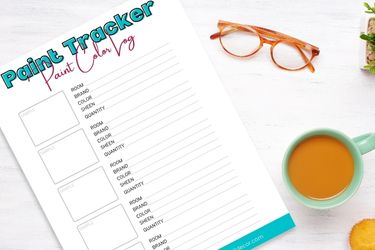
I love that I can always find the best wall decor tips on your blog. I’m someone who typically picks natural except the one time when I painted one of the rooms in my previous 100-year-old house a bright “historical color” from that time period and it was a hit! I’ve noticed looking through your paint samples that I’m starting to lean towards blues and grays now! Thanks for the helpful tips!
That’s so awesome to hear! I’m glad I could help. I’ve been loving grays and blues lately, too, and I’m even considering painting my office a medium-dark blue. 🙂 I recently painted my kitchen/dining room in a gray and the kids’ playroom in a super light, frosty blue. So pretty!